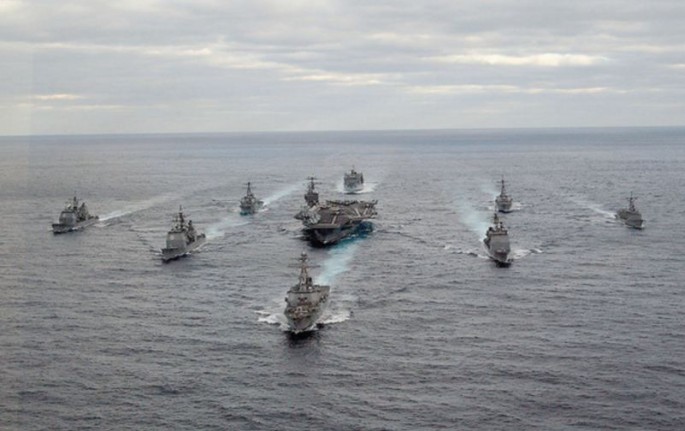An op-ed in the Communist Party of China (CPC) newspaper, Global Times, derided the U.S. Navy's new warfighting strategy called "Sea Control" as a "manifestation of the (sic) U.S. hegemonism."
Ironically, the piece argued the sea "is a pathway for transport and trade among different countries, which should not be controlled by any country," a statement that conveniently forgets China's patently illegal claim to own most of the South China Sea.
To cement this claim, which was declared illegal by the Permanent Court of Arbitration on July 12, 2016, China has built a string of man-made islands, seven of which it has militarized with garrisons, airfields and air defense systems.
The story, which was written by Senior Captain Zhang Junshe, senior researcher of the People's Liberation Army Navy (PLAN) Military Academic Research Institute, also said its sea control strategy "reflects the U.S.' cold war mentality ... It is inappropriate for the U.S. Navy to launch this strategy now. It is a manifestation of the U.S. hegemonism."
According to Sea Control, U.S. Navy surface fleet will fight its future wars with the aim of wresting sea control from China and Russia in disputed waters.
The return to sea control from the current doctrine of force projection confirms the threats posed by the People's Liberation Army Navy (PLAN) and the Russian Navy, either alone or in concert with one another. Sea Control was the paramount strategy during the face-off against the Soviet Union during the Cold War.
To implement this new strategy, the navy will acquire more surface combatants, emphasize electronic warfare and develop new over-the-horizon anti-ship missiles (AShMs).
In early 2015, the U.S. Navy announced a re-emphasis on the higher-end fight, which it described using the concept of "distributed lethality," which is the "baby" of Vice Admiral Tom Rowden, Commander, U.S. Naval Forces (COMSURFOR).
Admiral Rowden contends the U.S. Navy will have to regain control of the sea since the U.S.' strategic competitors (China and Russia) are seeking to challenge the U.S.' long-standing dominance of the sea.
Captain Zhang points out the U.S. has the most powerful navy in the world.
"It has 10 Nimitz Class aircraft carriers, each of which can carry 80 aircraft while China has only one conventionally powered aircraft carrier with a displacement of approximately 50,000 tons," wrote Captain Zhang,
"What's more, in regards to the number of nuclear submarines, the U.S. far exceeds China. Nevertheless, the U.S. still strives to gain absolute security by taking advantage of other countries' insecurity."
This situation will not benefit anyone, said Captain Zhang.
He explained PLAN is enhancing its ability in far sea operation and cooperation because China is taking on more international responsibilities with its rapid development.
"But actions of the Chinese Navy are portrayed as threats by the U.S., which reflects its ambivalence and zero-sum thinking," he pointed out.
He said maritime frictions between the U.S. and the countries involved (read China) will intensify, which can even lead to maritime collision. This will be the net result if the U.S. "continues to strengthen its control in the sea and interfere with navigation freedom (a reference to U.S. patrols in the South China Sea)."
"If the US gains absolute control on maritime traffic channels, China's economy and freedom of navigation will be jeopardized. This will have detrimental effects on the flow of international trade."
To prevent this, "China should increase its input in national defense accordingly and promote its defense capabilities with the growth of its economic strength, and thus, further safeguarding the security of its maritime sovereignty and territorial integrity."



























